Today Current Affairs: 22nd April 2022 for UPSC IAS exams, State PSC exams, SSC CGL, State SSC, RRB, Railways, Banking Exam & IBPS, etc
Table of Contents
Mysterious Liver Disease Reported In Spain, Denmark And Netherland:

Some Cases of a Mysterious Liver Disease have been reported in Spain, Denmark and the Netherlands, besides the US and UK.
Mysterious Disease:
- Children between the age of 1 to 6 years old have been the target of the disease.
- According to reports, the disease might be related to virus usually associated with colds.
- The disease has been reported to be severe so far. Though no children died so far in the US, UK, six children needed liver transplants.
- The symptoms are general liver diseases like hepatitis or liver inflammation but the cause remains unknown.
Jaundice, diarrhoea and abdominal pain has been reported.
SAANS Campaign:

Health and Medical Education Minister of Karnataka, K. Sudhakar launched the ‘Social Awareness and Action to Neutralise Pneumonia Successfully’ (SAANS) on 20th April 2022.
- SAANS is a campaign that has been launched to ensure early detection and greater awareness of pneumonia in children under the age of five
- Pneumonia is a lung infection that is caused due to viral, bacterial, or fungal infection.
- As per SRS 2018, Karnataka’s under-five mortality is at 28 per 1000 live births.
- By 2025, the state’s goal is to reduce the under-five mortality to 23 per 1,000 live.
- Also, to achieve the National Health Policy goals, pneumonia mortality has to be reduced to less than 3 deaths per 1,000 live births.
- In India, childhood pneumonia still remains a health threat to the children who are aged below five years contributing to 15 percent of the nation’s under-five deaths.
- Community awareness generation through extensive mass media and digital campaigns regarding pneumonia has been taken up by the State.
- To generate awareness, ASHA workers have also been roped in.
- Also, across the state, facility-level management for severe pneumonia cases is being strengthened.
- Along with this, skill stations are being set up and the healthcare providers are also being provided skill-based training.
- All healthcare providers in the state are taking up active screening of the children who are under-five for management and early identification of pneumonia.
Draft Battery Swapping Policy:
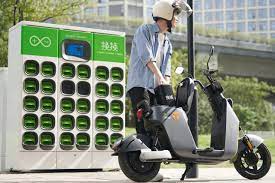
Government think-tank Niti Aayog has prepared a draft battery swapping policy.
- Under this, it has proposed offering incentives to electric vehicles (EVs) with swappable batteries, subsidies to companies manufacturing swappable batteries, a new battery-as-a-service business model, and standards for interoperable batteries, among other measures.
- The draft policy has suggested that the GST Council consider reducing the differential across the tax rates on Lithium-ion batteries and electric vehicle supply equipment.
- Currently, the tax rate on the former is 18 per cent, and 5 per cent on the latter.
- Finance Minister Nirmala Sitharaman had announced during this year’s Union Budget that the government was set to roll out a battery swapping policy, in a bid to reduce upfront costs of purchasing EVs and drive adoption among buyers.
- The policy is targeted at supporting the adoption of battery-swapping, primarily for battery swapping systems used in electric scooters and three-wheeler electric rickshaws.
- Niti Aayog said battery swapping will fall under the battery-as-a-service (BaaS) business model, and such models would have to ensure interoperability between EVs and batteries for a successful mainstreaming of battery swapping as an alternative.
Noise Pollution:

An ultimatum by Raj Thackeray, president of the Maharashtra Navnirman Sena (MNS), that repercussions would follow if speakers on mosques were not removed by May 3, has created political turmoil in the state.
- The Maharashtra government is relying on provisions of The Noise Pollution (Regulation and Control) Rules, 2000 to negotiate the controversy over the use of loudspeakers by mosques.
- As per the Central Pollution Control Board’s mandate for noise pollution, ‘noise’ is defined as unwanted sound. Sound, which pleases the listener, is music and that which causes pain and annoyance is noise.
- Section 2 (a) of the Air (Prevention and Control of Pollution) Act, 1981 includes noise in the definition of ‘air pollutant’.
- Noise pollution and its sources are regulated under The Noise Pollution (Regulation and Control) Rules, 2000 under The Environment (Protection) Act, 1986.
- Noise pollution Rules have defined the acceptable level of noise in different zones for both daytime and nighttime.
- In industrial areas, the permissible limit is 75 decibels (unit of sound; tenth of a ‘bell’, symbol dB) for daytime, and 70 dB for night.
- Daytime is defined as the period from 6 am to 10 pm, and night is 10 pm to 6 am of the following day.
Global Ayush Investment & Innovation Summit 2022:

Prime Minister Shri Narendra Modi today inaugurated the Global Ayush Investment & Innovation Summit 2022 at Gandhinagar, Gujarat.
- The three day Ayush global summit will witness a dialogue with entrepreneurs, industry, startups and other stakeholders to encourage them to increase investment for innovation in Ayush as the sector continues to showcase colossal room for growth.
- The Global Ayush Investment & Innovation Summit will be in progress till April 22, 2022 in Gandhinagar, Gujarat and commenced a day after the Prime Minister inaugurated the WHO-Global Centre for Traditional Medicine in Jamnagar.
- In 2014, where the Ayush sector was less than $3 billion, today it has increased to more than $18 billion.
- Many new initiatives in Ayush sector were announced by the Prime Minister, first being a special Ayush mark for Ayush products.
- This will give people all over the world the confidence of quality Ayush products.
- Government will develop a network of Ayush parks to encourage the promotion, research and manufacturing of Ayush products across the country.
- A new category named ‘Ayush Aahar’ was announced which will greatly facilitate the producers of herbal nutritional supplements.
- India will soon introduce a special Ayush visa category for foreign nationals who want to come to India to take advantage of Ayush therapy was announced.
- PM Modi announced launch of Ayush Export Promotion Council and four Ayush ICT initiatives which includes Ayush Information Hub, AyuSoft, Ayush Next and Ayush GIS.
- Prime Minister also released a comic book named ‘Professor Ayushman’, which describes how Ayush systems and products helped in fighting not only COVID-19 but other diseases also.
- On this occasion, the Prime Minister distributed awards to the winners of ‘Ayush Start-up Challenge’ organised by All India Institute of Ayurveda (AIIA) in association with Start-up India.
Project 75:

Yard 11880, the sixth and last submarine of the Indian Navy’s Kalvari class submarines of Project 75 has been launched at the Kanhoji Angre Wet Basin of Mazagon Dock Limited (MDL).
- Dr Ajay Kumar, Defence Secretary was the Chief Guest at the ceremony and the submarine has been named ‘Vagsheer’.
- The Kalvari class is a class of diesel-electric attack submarines based on the Scorpène-class submarine being built for the Indian Navy.
- The submarines are designed by French naval defence and energy company DCNS and are being manufactured by Mazagon Dock Limited in Mumbai.
- The first of the Project – 75 submarines was commissioned into the Navy in December 2017 and presently four submarines of this Project are in commission in the Indian Navy.
- The fifth submarine is progressing with the Sea Trials and is likely to be delivered this year.
- The sixth submarine will now commence setting to work of various equipment and their harbour trials.
- The crew will thereafter sail the submarine for the rigorous Sea Acceptance Trials after which the submarine would be delivered to the Indian Navy by late next year.
India’s First Pure Green Hydrogen Plant : Jorhat
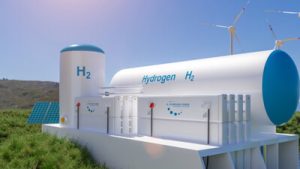
India’s first pure green hydrogen plant commissioned in Jorhat.
- Oil India Limited (OIL) has taken the first significant step towards Green Hydrogen Economy in India with the commissioning of India’s First 99.999% pure Green Hydrogen pilot plant, with an installed capacity of 10 kg per day at its Jorhat Pump Station in Assam today.
- The plant produces Green Hydrogen from the electricity generated by the existing 500kW Solar plant using a 100 kW Anion Exchange Membrane (AEM) Electrolyser array.
- The use of AEM technology is being used for the first time in India.
- This plant is expected to increase its production of green hydrogen from 10 kg per day to 30 kg per day in future.
- The company has initiated a detailed study in collaboration with IIT Guwahati on blending of Green Hydrogen with Natural Gas and its effect on the existing infrastructure of OIL.
What Are The Naga Ceasefire Agreements?
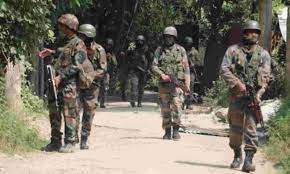
The centre has extended the ceasefire agreements between the Central government and three Naga groups by a year which was signed on 19th April 2022.
- The Naga groups include National Socialist Council of Nagaland-NK (NSCN-NK), National Socialist Council of Nagaland-Reformation (NSCN-R) and National Socialist Council of Nagaland-K-Khango (NSCN-K-Khango).
- All these groups are breakaway factions of National Socialist Council of Nagaland (NSCN-IM) and National Socialist Council of Nagaland-Khaplang (NSCN-K).
- This agreement is a significant boost to the Naga peace process and in line with Prime Minister of India’s vision of ‘insurgency free, prosperous North East’.
- In September 2021, the Centre had entered into a one-year ceasefire agreement with the National Socialist Council of Nagaland (K) Niki Group.
- The Centre had earlier signed a “Framework Agreement” with the NSCN (IM) in August 2015.
- After India became independent in 1947, the Naga territory initially remained a part of Assam.
- In 1957, after an agreement was reached between Naga leaders and the Indian government, the Naga Hills region of Assam and the Tuensang frontier division to the northeast were brought together under a single unit directly administered by the Indian government.
- Nagaland achieved statehood in 1963, however, rebel activity continued.
Pre-Eruption Warning Signals At Volcanoes:
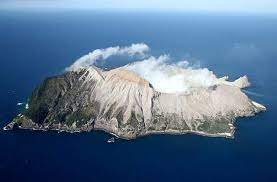
New research detected pre-eruption warning signals at Whakaari White Island and other active volcanoes, majorly from New Zealand.
- Every volcano behaves differently, some have crater lakes while others are “dry”, they have diverse magmas and rise to different elevations.
- Despite these differences volcanoes such as Whakaari, Ruapehu and Tongariro in New Zealand could be driven to eruption by common processes in the shallow subsurface below their craters.
- In the new research, machine learning was used to sift through 40 years of seismic data from the New Zealand volcanoes and three others around the world, listening for frequencies that track the depth where gas, magma or water are moving or building up.
- Researchers saw one pattern repeatedly in the days before all the known Whakaari eruptions over the past decade, and most Ruapehu and Tongariro ones.
- This pattern is a slow strengthening of a quantity called Displacement Seismic Amplitude Ratio (DSAR), which peaks a few days before each event.
- DSAR is a ratio that compares the “activity” of fluids (gas, hot water, steam) at the volcano’s surface to those several hundred metres deep. When DSAR increases, surface fluids are quiet, but deep ones are still actively moving and circulating vigorously below ground.
- Seismic waves are the waves of energy caused by earthquakes or an explosion. They are the energy that travels through the earth and is recorded on seismographs.
- This type of analysis is so new that the researchers have not had many chances to test how reliable the DSAR and other automated measures are for forecasting.
Whakaari and Ruapehu:
Whakaari:
- Whakaari/White Island is in the Bay of Plenty, 43 miles west of Cape Runaway, eastern North Island, New Zealand is an active volcano.
- It is the top of a submarine vent at the northern end of the Taupō-Rotorua Volcanic Zone.
- With a total land area of about 1,000 acres, it rises to 1,053 feet at Mount Gisborne.
- Scrub vegetation is common on much of the island.
- The island was sighted and named by Capt. James Cook in 1769. It has numerous hot springs, geysers, and fumaroles, its last eruption, which took place in December 2019.
Ruapehu:
- Mount Ruapehu is 2800m stratovolcano in New Zealand’s central North Island.
- It is also capped by a hydrothermal system and a warm crater lake (Te Wai a Moe).
- The volcano is forested below its line of permanent snow cover. Above the line, glaciers flow from the peak. Within the crater lies a lake, which is drained by the Whangaehu River.
- The temperature and level of its lake is known to vary in cycles, responding to changes in gas released into its base, local weather or the occasional formation of a gas seal.
- The lake is so large it hides the surface activity that is useful for diagnosing volcanoes like Whakaari.
Mugger Crocodile:
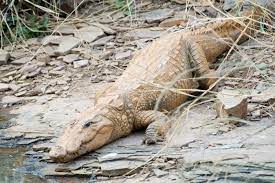
The Indian Railways has delivered water to Pali district in western Rajasthan to ensure survival of Mugger Crocodile or Marsh Crocodile as the region’s water bodies have dried up due to a hot March.
- Scientific Name: Crocodylus palustris
- Description: An egg-laying and hole-nesting species, also known to be dangerous.
- Habitat: Mainly restricted to the Indian subcontinent where it may be found in a number of freshwater habitat types and also in coastal saltwater lagoons and estuaries. It is already extinct in Bhutan and Myanmar.
- Threats: Habitat destruction, fragmentation, and transformation, fishing activities and use of crocodile parts for medicinal purposes.
- Protection Status:
- IUCN List of Threatened Species: Vulnerable
- CITES: Appendix I
- Wildlife Protection Act, 1972: Schedule I
Fincluvation:

India Post Payments Bank (IPPB), a 100% government owned entity under Department of Posts (DoP) announced the launch of Fincluvation– a joint initiative to collaborate with Fintech Startup community to co-create and innovate solutions for financial inclusion.
- Fincluvation is an Industry first initiative to create a powerful platform to mobilize the start-up community towards building meaningful financial products aimed at financial inclusion.
- Fincluvation will be a permanent platform of IPPB to co-create inclusive financial solutions with participating start-ups.
- India Post Payments Bank (IPPB) has been established under the Department of Posts, Ministry of Communication with 100% equity owned by Government of India.
- IPPB was launched by the Prime Minister Shri Narendra Modi on September 1, 2018.
Prime Minister’s Awards For Excellence In Public Administration:
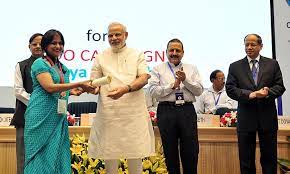
Prime Minister’s Awards for Excellence in Public Administration have been instituted with a view to recognize the extraordinary and innovative work done by Districts/implementing units and Central/State organisations for the welfare of common citizens.
- They are also conferred for effective implementation of identified priority programs and innovation.
- Exemplary work done in the following five identified priority programmes are given awards
- Promoting “Jan Bhagidari” or People’s Participation in Poshan Abhiyan,
- Promoting excellence in sports and wellness through Khelo India scheme,
- Digital payments and Good Governance in PM SVANidhi Yojana,
- Holistic Development through One District One Product scheme,
- Seamless, End-to-End Delivery of Services without Human Intervention.
- A total of 16 awards for 5 identified Priority Programmes and for innovations in the sphere of public administration/delivery of services etc. are given this year.
Civils services Day:
- Observed On 21st April every year.On this day, Sardar Vallabhbhai Patel addressed the first batch of probationers at the All India Administrative Service Training School at Metcalfe House, New Delhi in 1947. In his speech he called civil servants as the steel frame of India.
Dr. Ambedkar Centres Of Excellence (DACE) Scheme:

Union Minister for Social Justice and Empowerment and Chairman of Dr. Ambedkar Foundation (DAF) Dr. Virendra Kumar will launch the Dr. Ambedkar Centres of Excellence (DACE) Scheme Pan India from Banaras Hindu University, Varanasi on 22.04.2022.
- Ambedkar Foundation (DAF), Ministry of Social Justice & Empowerment, Govt. of India, is starting Dr. Ambedkar Centres of Excellence (DACE) in 31 Central Universities across the country.
- The DACEs are being set up to provide high quality free coaching facilities to the Scheduled Caste students forthe Civil Services examinations, conducted by Union Public Service Commission (UPSC).
- Under the DACE Scheme, a total of 100 seats will be sanctioned for coaching per centre.
- Of the total sanctioned seats for coaching, 33% seats will preferably be given to the eligible female candidates of Scheduled Castes.
- If eligible female candidates are not available in sufficient numbers for the coaching, the concerned University will allocate the vacant seats to the male/transgender candidates (SC Candidates only).
- The coaching benefits, under the scheme,will only be utilized by a student ONCE regardless of the number of chances he/she is entitled for a particular competitive examination.
- Ambedkar Foundation (DAF) shall fund the entire expenditure incurred on the establishment of Dr. Ambedkar Centre for Excellence.
- 75,000/- per annum / per student will be provided to the University for 100 students. Total amount of Rs. 75.00 lakh per year would be provided to the University for running the Scheme.
International Financial Services Centres Authority:

International Financial Services Centres Authority (IFSCA), has notified a comprehensive regulatory framework for Investment Funds in the official gazette on April 19, 2022.
- Registering the Fund Management Entity: A Fund Management Entity will be registered with IFSCA and will be able to manage different types of funds and schemes subject to meeting the eligibility criteria.
- Venture Capital Schemes or non-retail schemes soliciting money from accredited investors only shall qualify for a green channel i.e. the schemes filed can open for subscription by investors immediately upon filing with IFSCA.
- Exchange Traded Funds (ETFs): Considering that ETFs offer a means to gain exposure to specific markets or asset classes at a low cost, registered fund managers in IFSC shall be able to launch not just Index based ETFs but also Active ETFs and Commodity based ETFs.
- Environment Social Governance (ESG): Growing number of investors expect fund managers to make ESG issues integral to their investment strategies.
- With the intent of making IFSC a hub for a host of activities related to sustainable finance, disclosures have been proposed to be mandated at the entity level and scheme level.
Integrated Command And Control Centres:

The government has announced that 80 of the 100 planned Integrated Command and Control Centres have been set up, with the rest to be completed by August 15.
- The Smart Cities Mission (SCM) includes setting up ICCCs for each city as a vital step.
- They are designed to enable authorities to monitor the status of various amenities in real time.
- They are aimed at controlling and monitoring water and power supply, sanitation, traffic movement, integrated building management, city connectivity and Internet infrastructure.
- These centres will now also monitor various other parameters and are also linked to the CCTNS (Crime and Criminal Tracking Networks and Systems) network under the Ministry of Home Affairs (MHA).
- The ICCC acts of a smart city acts as a “nerve centre” for operations management. It processes a complex and large pool of data sets at an aggregated level. For example, it is now the go-to source for integrated traffic management monitoring.
Smart Cities mission:
- GoI launched the smart cities mission in 2015.
- The cities were given five years to complete the projects under the mission, with the first set of Smart Cities expected to complete in 2021.
- The objective is to integrate city functions, utilize scarce resources more efficiently, and improve the quality of life of citizens.
- It is an innovative initiative under the Ministry of Housing and Urban Affairs.
- It is a Centrally Sponsored Scheme.
Announcement On Setting Up 75 Digital Banking:

Finance Minister Nirmala Sitharaman has reiterated her Budget announcement on setting up 75 digital banking units in 75 districts of the country this year.
- This is to take forward the government’s agenda of digital financial inclusion.
- Digital banking involves taking all traditional banking activity online — doing away with paperwork like cheques, pay-in slips, demand drafts and so on.
- A digital banking unit is a specialised fixed point business unit or hub housing certain minimum digital infrastructure for delivering digital banking products and services as well as servicing existing financial products and services digitally in self-service mode at any time.
- Commercial banks (other than regional rural banks, payment banks and local area banks) with past digital banking experience are permitted to open DBUs in tier 1 to tier 6 centres, unless otherwise specifically restricted, without having the need to take permission from the RBI in each case.
- As per the RBI, each DBU must offer certain minimum digital banking products and services.
- Such products should be on both liabilities and assets side of the balance sheet of the digital banking segment.
- The services include savings bank accounts under various schemes, current accounts, fixed deposits and recurring deposit accounts, digital kit for customers, mobile banking, Internet banking, debit cards, credit cards, and mass transit system cards etc.
- Digital banking units will help banks themselves which are now looking to reduce physical footprint with fewer brick and mortar branches, with a ‘light’ banking approach.
- The move will open up the rural market for service providers besides providing a boost to credit flow.
- Such units will also be cheaper to establish than a new branch, and can provide better customer experience aided by technology.
- The units can also be branded as new-age banks that can help provide personalised finance management tools to new consumers, branded better.
- Digi banking units also require lesser staff, with cheaper maintenance due to technological tools and hence can be high-yield units for the parent bank.




